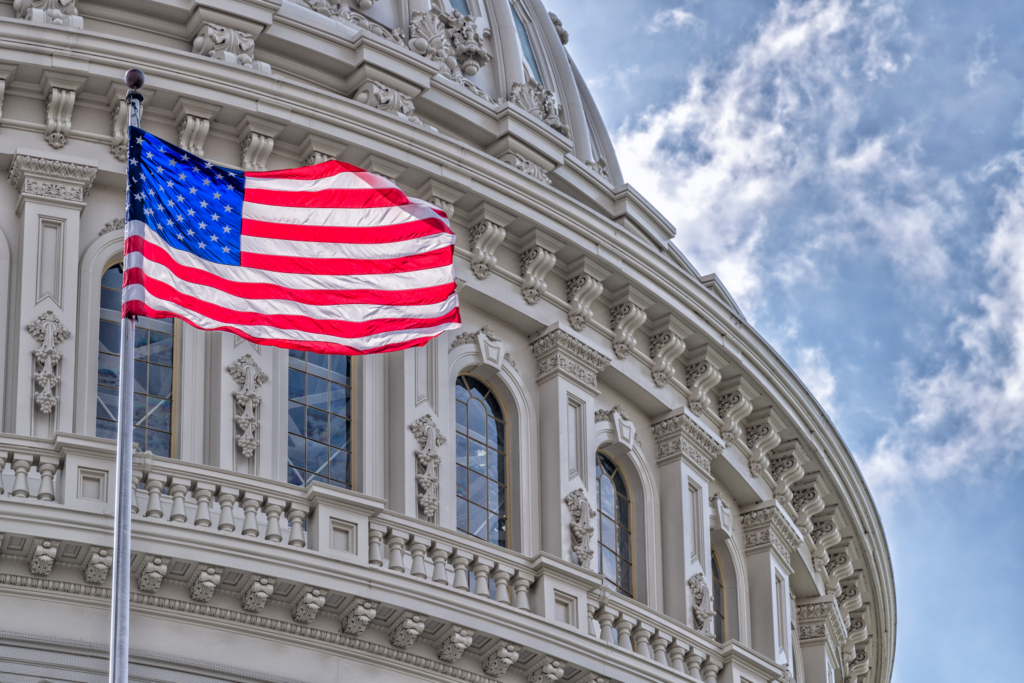Today, on November 5, Americans will head to the polls to decide who will lead the United States as its next president. To help make sense of the election process and the key issues at stake, Lundagård posed six questions to Jonathan Polk, professor of political science at Lund University.
How does the US presidential election work?
– Each of the 50 states is apportioned a certain number of electoral votes, and the number of electoral votes roughly corresponds to the population of the state. So larger states have more electoral votes, and the number of electoral votes needed to win is 270.

Photo: Lund University
– For the United States presidential election, it is more about whether or not the candidate is able to assemble enough votes to win the electoral college than about the number of votes overall. Famously in 2016, Hillary Clinton, who was the nominee for the Democratic Party, received more votes in total than did Donald Trump. But Donald Trump won the electoral college vote because he was able to secure more votes in the states needed to get the electoral win.
What are the states referred to as ”swing states”?
– Most of the election comes down to the success the two candidates have in the swing
states that will determine the path to 270 overall electoral votes. In the 2024 election,
seven states are referred to as swing states. They are so evenly distributed between Democrats and Republicans that it could potentially go either way depending on the nature of the campaign and things along these lines. These states are three in the Rust Belt, the upper midwest of the United States (Wisconsin, Michigan, Pennsylvania), and then a series of Sun Belt states, in the south and west of the United States (Nevada, Georgia, North Carolina and Arizona).
What is the power of the president in the US?
– In the United States’ political system, there is a division between the legislative and the executive authority. The power of the presidency is the executive office. The president is involved in the legislation via signing (or not signing) it into law and with the execution of laws.
– The controlling of administrative agencies and stating of foreign policy priorities are also the responsibilities of the president in this system. The president is also the commander in chief of the US armed forces. Over time, the power of the presidency in the USA has grown considerably.
What does Kamala Harris stand for?
– There are stark differences between the candidates in personality, temperament, and world view. Both of them are standing for political parties that have longer traditions within the US electoral system of policy preferences, both domestic and foreign. In some ways, these partisan labels remain a good way to understand the candidates. Kamala Harris is a relatively standard Democrat in so far as she would primarily be looking to make more incremental changes to the policies advocated and put in place by the Biden administration. Harris has a legal background as a prosecutor, which leads her to emphasize rule of law, a topic that remains in focus because of Trump’s own ongoing criminal trials. Following the US Supreme Court’s overturning of Roe v. Wade in 2022, Harris has emphasized reproductive rights and would push to codify the right to abortion at the federal level.
What does Donald Trump stand for?
– Relative to the Democratic Party, which tends to see a more productive role for the state in the economy and other aspects of social life, Republicans have a tendency to see state involvement in society as something that should be limited to protection of property rights, for example. Yet, Donald Trump scrambles these traditions in some areas. More specifically, his statements about using state power to prosecute and punish his political opponents and to deport millions of US residents of immigrant background run counter to a limited view of government, to say the least. Trump is strongly associated with a move towards more nativist positions vis à vis migration, cultural diversity, and international trade: much more conservative positions on immigration and increasingly harsh treatment of the people that may already be within the country that may not have entered through legal processes. More traditionally, he is also in favour of tax cuts, which still constitutes an essential plank of the Republican Party.
Why do the issues at stake in this election also matter for the rest of the world, particularly for Europe?
– Donald Trump, relative to most other presidential candidates, either Republican or
Democrat, is not supportive of international organisations and international collaboration through things such as the Paris Agreement to reduce the warming of the planet, and the North Atlantic Treaty Organisation (NATO), of which Sweden is a recent member. He has stated that he would place tariffs on imports to the USA, which would likely be of immediate relevance to export-oriented economies like Sweden, and to the European Union more broadly. He expresses indifference vis-à-vis Russia’s invasion of Ukraine and hasn’t said unequivocally that he would like to see Ukraine win. He has also said that he could end this war very quickly, if he’s elected as president, but remains unclear on whose terms such a war would be ended. On the Russian invasion of Ukraine as well as in climate politics and trade politics, you would see rather substantial differences in the election of Kamala Harris relative to Donald Trump. And those are three topics quite salient to people in Europe and to Sweden in particular.










